In human life there is constant change of fortune; and it is unreasonable to expect an exemption from the common fate. Life itself decays, and all things are daily changing.”
– Plutarch, Greek Historian, Biographer, Essayist
Buenos Aires – Continuing on my series of Supreme Directors’ walks – we pick up, chronologically, though not geographically, with General José Casimiro Rondeau Pereyra – generally just referred to as Rondeau. Fittingly, perhaps, the street named after him is off in the southern barrios, punctuated by gaps, odd angles, the backsides of many buildings, and, not much of interest.
Likewise his life and career were checkered – born in Buenos Aires, moved shortly thereafter to Montevideo, where he went to school, returned to BA to enlist in the armed forces, and shortly returned to Montevideo to continue his military career. Captured by the British and sent to England, released when the British lost, went to Spain, fought in the Napoleonic Wars, returned to Uruguay to lead various campaigns, went to Peru to do the same, replacing “the Great Liberator”, José de San Martín as leader of the troops there. At age 42 he was elected in absentia as the third Supreme Director of the country, but refused to return to Buenos Aires, continuing to carry on his various military campaigns against the Spanish royalists in Peru – so Ignacio Álvarez Thomas was named acting Supreme Director and filled in for him during the entirety of his year’s term. After losing a couple of battles he was relieved of command, returned to Buenos Aires where he served briefly as provincial governor, and then was re-elected to the position of seventh Supreme Director, which he served as for about seven months until the government was toppled by a military coup. He returned to Uruguay where he led numerous military campaigns to eradicate the native population, was elected governor when Uruguay declared its independence from the rest of the union, until replaced by a rival, however, he continued to serve as the army’s general for the country, later as War Minister, and finally was killed during the siege of Montevideo in 1844, at age 71.
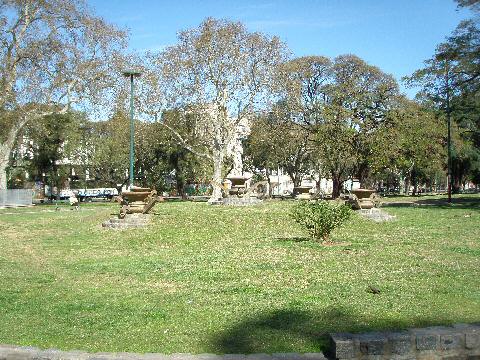
Our walk begins at Parque España, which technically isn’t along Rondeau, but is a good beginning point just a block away – named because at one point, the Spanish Embassy was located to one side of the plaza. The park, designed by Carlos Thays, and clearly at one time quite beautiful, was designed as the “southern botanical gardens” for the city, originally as the the Plaza de los Inválidos, or Invalids Plaza – so named because it was surrounded by half a dozen hospitals, several of which still exist. Today it’s a bit rundown, with a good number of homeless hanging about, as well as locals, and kids from the neighboring high school taking a break. The site was originally the home of the southern slaughterhouses for the city, connected with the nearby Mercado del Sur, the covered market that was originally on the site that is now Constitución Station. At one time there were half a dozen important sculptures in the park, most have been moved to the grounds of the nearby Centro Cultural del Sur and one to Parque General La Paz. I only noted this one remaining central sculpture, though various tour guides claim that a couple of the others remain in different corners of the park.
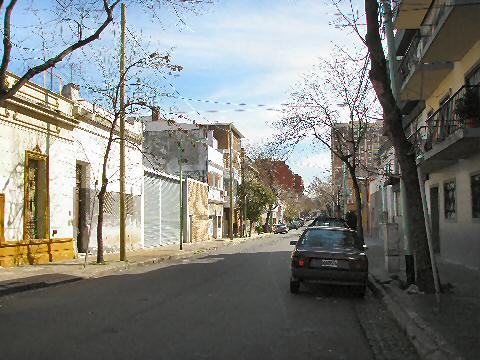
The street begins in the 1500 block, at Sáenz Peña, and is not particularly notable, mostly smaller one family homes with a few scattered apartment buildings.
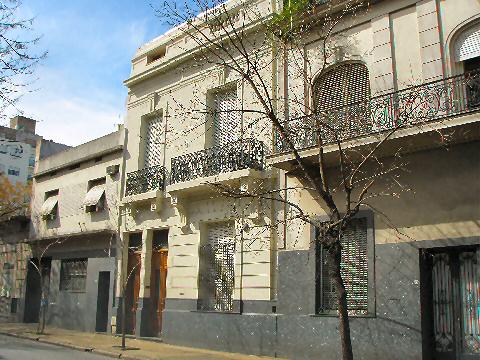
As I entered the second block, approaching the corner of Solis, I was immediately aware of the sweet aroma of chocolate, permeating the air. A bit of zigzagging about and on the cross street, and I found, along the block of Solis to the right, the offices of the Fenix Chocolate company, though the aroma was clearly emanating from a nearby building – I later found that the “factory” is at Solis 2022, just off the corner. I’ve heard the place is worth a visit if you can arrange it…
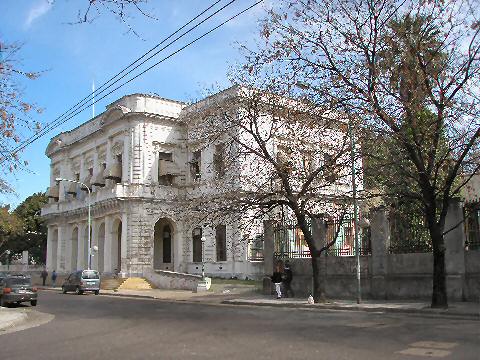
Within just a trio of blocks, Rondeau comes to its first gap, ending at the grounds of a Gastroenterology Hospital – quite a pretty building actually, though the newer additions on the grounds are basically ugly bunkers…
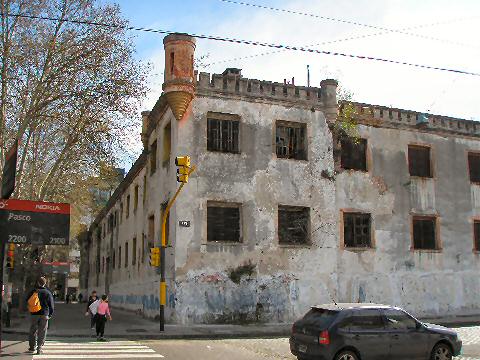
Picking up on the other side of the hospital, the first building you run into is the backside of the Caseros Prison which I mentioned on one of my Paint by Numbers walks…
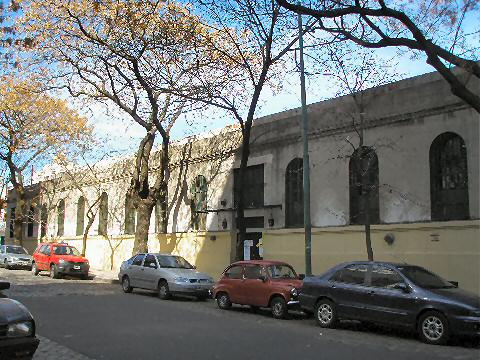
Another block on and the low, concrete block structure that is, I gather, a convent run school of some sort…
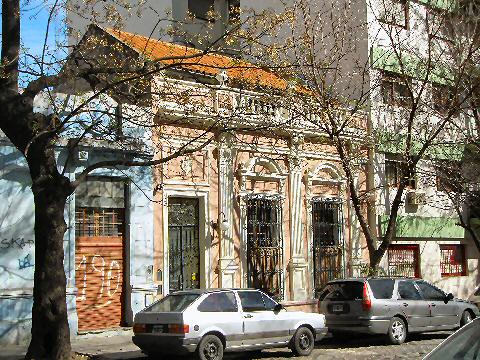
The street isn’t totally devoid of charm, though the homes that are most interesting standout precisely because they’re so out of character with their surroundings…
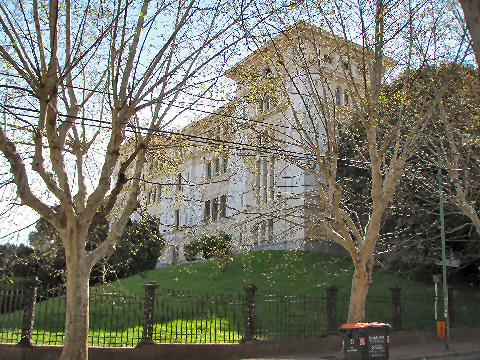
The side of the Instituto Bernasconi, also noted in the previous walk.
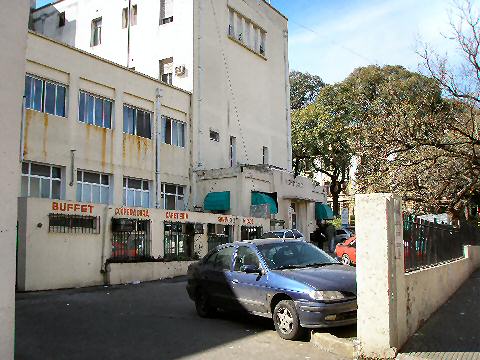
I suppose if one needed refreshment at this point one could stop at the comedor attached to the side of the Hospital Sarda, but I don’t think I would…
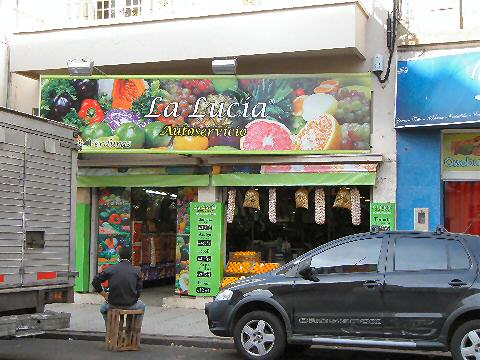
A moment’s side trip to the right on Av. La Rioja yielded up this interesting self-service fruit and vegetable market – not huge, but with great prices and selection – perhaps not worth the trip just for that, but an interesting side note.
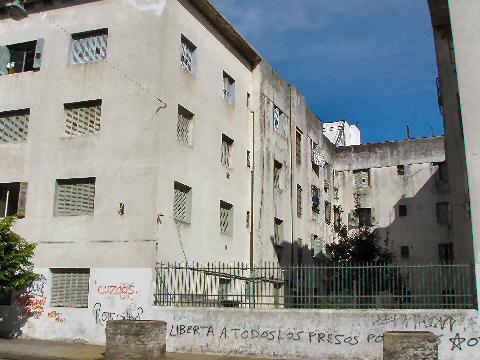
The back of the Casa Colectiva Patricios, a public housing project built in 1939.
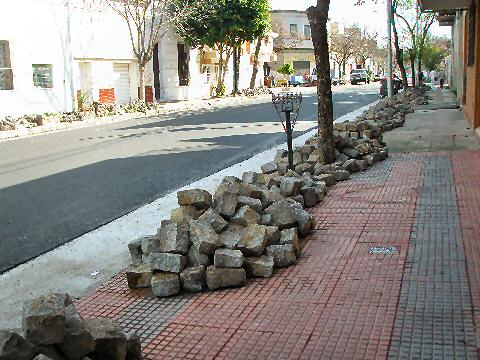
This has been going on all over the city – part of the new administration’s fix-em-up projects – the old cobblestones are being torn out and the streets paved. On Rondeau, from 3300-3500, plus the side streets were all underway.
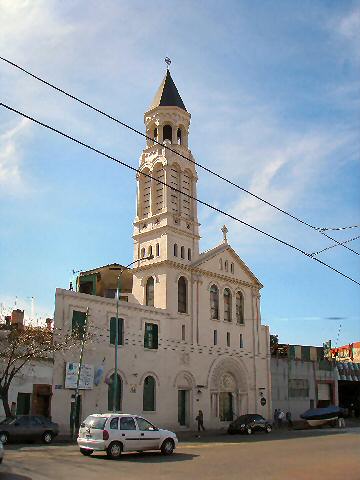
Rondeau reaches another gap, of about a block this time, where it crosses Av. Chiclana, an intersection where several streets come together. Nothing of great note here, though the pretty Instituto San Bartolome, which is an elementary and junior high school, stands out.
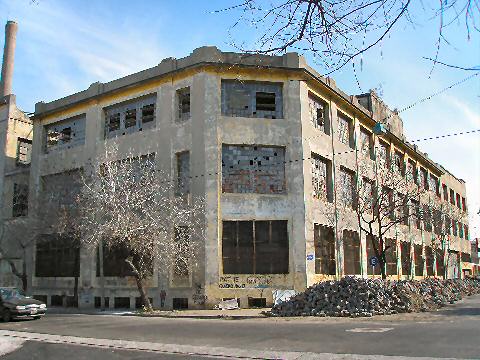
Within a few short blocks the street draws to an end at Av. La Plata, fittingly, perhaps, the last thing on the block is the abandoned hulk of the José Ferrarini factory, which at one time, though it declared bankruptcy in 2005 (my how it’s gone downhill in only three years) was one of the leading producers of metal wire in the city, if not the country.
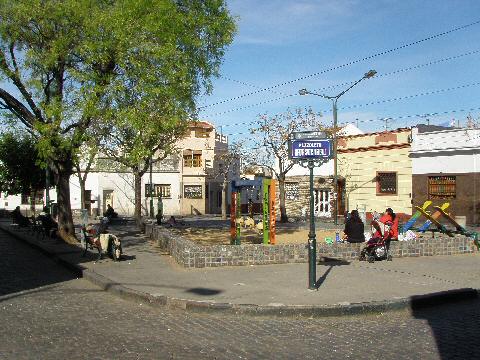
Though my “official” walk was at an end, I noted an odd street feature on my map just to the left of the street end – a small plaza surrounded by a small rectangle of streets, branching out in an “X” from the corners to a larger rectangle of streets. Sort of looks, in a two-dimensional view from above, like an emerald cut gemstone – regardless, I had to go peek, and found the pretty little Plazoleta Enrique Santos Discépolo, he having been a tango musician and composer who lived from 1901 to 1951. Quite popular apparently, with several well known compositions to his credit.
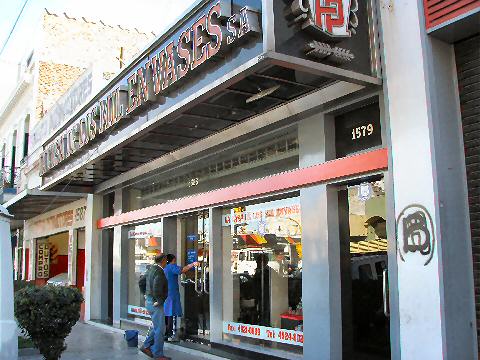
For the foodie, especially those who live here, perhaps the key thing to do is note La Casa de los Mil Envases, located a few blocks to the right along Av. La Plata at 1583, past the giant Carrefours San Lorenzo shopping center. If you need to can it, jar it, pack it in something, really, anything that is a container of any sort, from teeny tiny vials to big plastic boxes, in plastic, glass, and metal – this is the place to find it. Canning jars galore!
And, from there, just a few short blocks to the La Plata station on the E line…
[…] when last we checked in with the early days of this republic, it was officially in the hands of General José Casimiro Rondeau Pereyra. However, as noted there, when he was elected, he was off on a military campaign in Peru and […]
[…] create a national constitution and democratically elect a president, our erstwhile repeat Director, José Rondeau, was back in the position, and he didn’t like the direction the country was going. He was […]